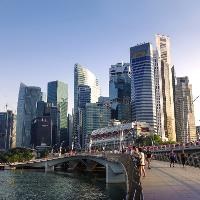(BRUSSELS) – The EU-Singapore trade agreement came into effect Thursday, offering European companies a gateway to the fast-growing South-east-Asian region, boosting trade for companies, farmers and workers.
“At a time when the fundamentals of open and rules-based global trade are put into question, we need agreements like this more than ever,” said the EU’s Trade Commissioner Cecilia Malmström.
“The EU-Singapore deal is the 16th trade agreement we have put in place since 2014. We have now the largest trade network in the world, including 42 trade agreements with 73 partners.”
With the entry into force of the agreement, Singapore will now:
- remove all remaining tariffs on EU products;
- provide new opportunities for EU services’ providers, among others in sectors such as telecommunications, environmental services, engineering, computing and maritime transport. It will also make the business environment more predictable;;
- provide legal protection for 138 iconic European food and drink products, known as Geographical Indications. This is an important step considering that Singapore is already the third largest destination for such European speciality products.;
- remove regulatory obstacles to trade in key sectors, for instance by recognising the EU’s safety tests for cars and many electronic appliances or by accepting labels that EU companies use for textiles.;
Singapore is by far the EU’s largest trading partner in the South-east Asian region, with a total bilateral trade in goods of over 53 billion and another 51 billion of trade in services.
Over 10,000 EU companies are established in Singapore and use it as a hub for the whole Pacific region.
The country is also the number one location for European investment in Asia, with investment between the EU and Singapore growing rapidly in recent years: combined bilateral investment stocks reached 344 billion in2017.
Key elements of the EU-Singapore trade and investment agreements



